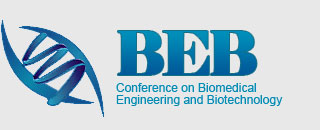Invited Speaker--Dr. Ikuo Yamamoto

Professor, Organization for Marine Science and Technology, Nagasaki University, Japan
Dr. Ikuo Yamamoto is Vice President and Professor of Nagasaki University in Japan. His areas of work include the development of Autonomous Underwater Vehicle (Leader of AUV “Urashima”, which established the world record autonomous cruising in February 2005), Remotely Operated Vehicle (Champion in underwater vehicle competition of Techno ocean world convention in 2012 and Okinawa offshore robotics contest in 2014,2015,2016; “Kaiko”, 10000m deep cruising in 1995), Robotic fish (the first life-like sea bream robotic fish was created in 1995, followed by dolphin, shark ray ,coelacanth, carp, etc.).
Professor Yamamoto held the post of Research Manager at Mitsubishi Heavy Industries where he was involved in projects which included the manufacture of the wings for the Boeing 787, multi -rotor aviation and real time monitoring and sensing system. His robotic space fish operated in the International Space Station in 2009 and he has worked on medical robots and instruments used for surgery and rehabilitation based on biological engineering technologies. He has published over 300 papers, books, patents, and has won several awards at international conferences. Also, he is awarded as GlobalScot from UK Scotland in 2017.
Speech Title: Pneumatic Cell Sheet Delivery System for laparoscopic Surgery and its application
Abstract: Recently endoscopic submucosa dissection (ESD) has been widely used as a treatment for gastrointestinal neoplasms. However, it has been reported that the duodenal ESD has a high rate of postoperative perforation because of the thin wall and exposure of the duodenal post-ESD mucosal defect to pancreatic juice and bile acid. In order to prevent this, an attempt to prevent the perforation after the duodenum ESD has been made by adhering a cell sheet to the serosal surface of the duodenum laparoscopically. However, it is difficult to deliver a cell sheet through a 12mm port to the target area laparoscopically, because the cell sheet which is very fragile needs to be adhered to the affected area. In this paper, we propose a pneumatic cell sheet delivery device specifically for use in laparoscopic surgery. The first feature of this device is a storage mechanism that prevents cell sheets from wrinkling when passing through the port. The second is providing the tip of the device with an array of fine pores mounted on the grid to allow for passage of air to reliably adhere the cell sheet to the target position in the abdominal cavity. The third is an interface unit that enables single-handed operation by operating it in conjunction with a foot pedal. The effectiveness of this approach has been confirmed in experiments, adhering a cell sheet to a duodenal silicone model in a surgical training box.
Keywords: Surgical device, Laparoscope, Pneumatic, Cell sheet

